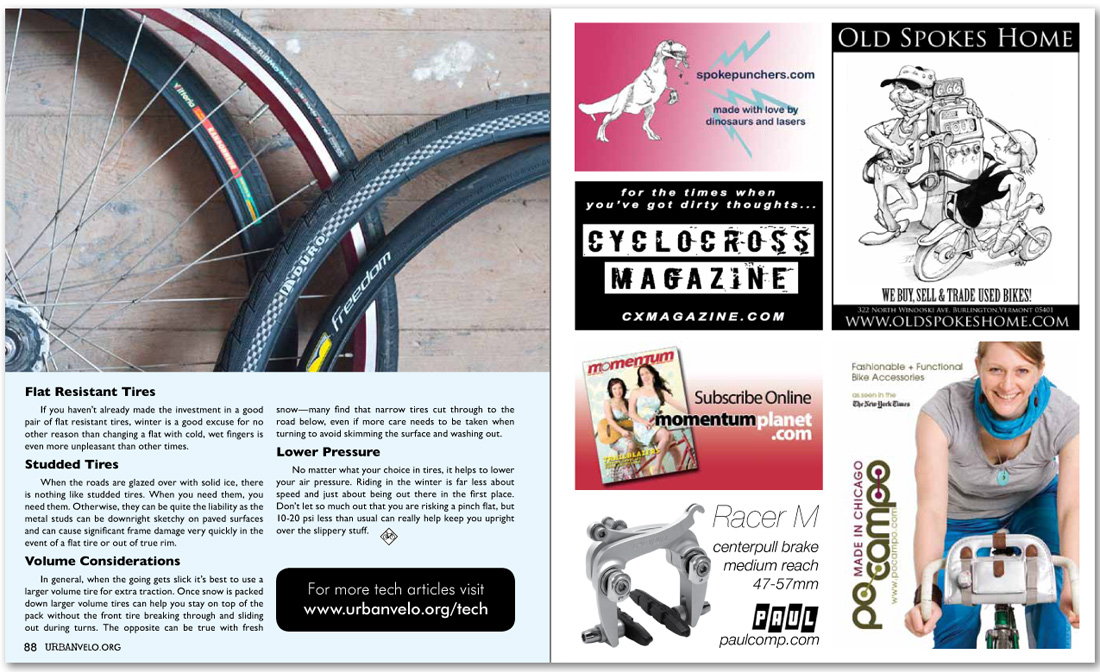


Flat Resistant Tires
If you haven’t already made the investment in a good pair of flat resistant tires, winter is a good excuse for no other reason than changing a flat with cold, wet fingers is even more unpleasant than other times.
Studded Tires
When the roads are glazed over with solid ice, there is nothing like studded tires. When you need them, you need them. Otherwise, they can be quite the liability as the metal studs can be downright sketchy on paved surfaces and can cause significant frame damage very quickly in the event of a flat tire or out of true rim.
Volume Considerations
In general, when the going gets slick it’s best to use a larger volume tire for extra traction. Once snow is packed down larger volume tires can help you stay on top of the pack without the front tire breaking through and sliding out during turns. The opposite can be true with fresh snow—many find that narrow tires cut through to the road below, even if more care needs to be taken when turning to avoid skimming the surface and washing out.
Lower Pressure
No matter what your choice in tires, it helps to lower your air pressure. Riding in the winter is far less about speed and just about being out there in the first place. Don’t let so much out that you are risking a pinch flat, but 10-20 psi less than usual can really help keep you upright over the slippery stuff.
Old Spokes Home
Cyclocross Magazine
Spokepunchers
Paul
Po Campo
Momentum